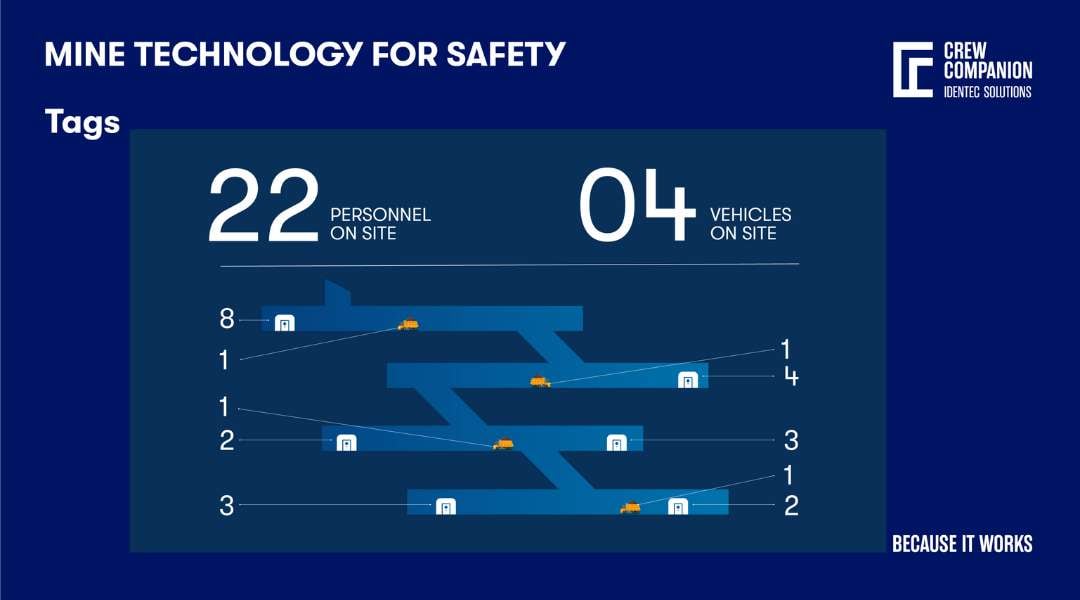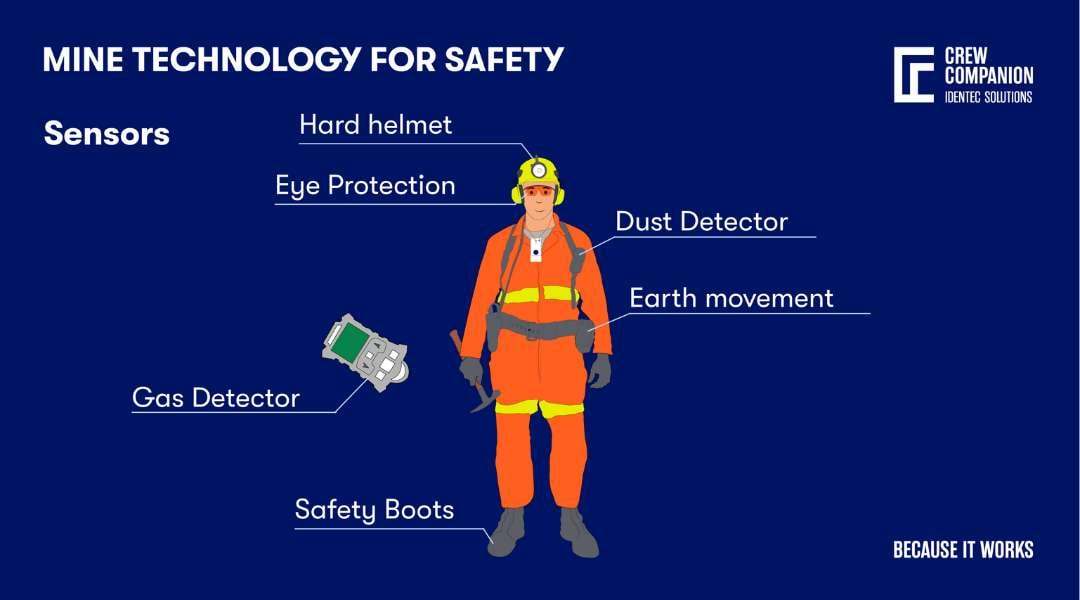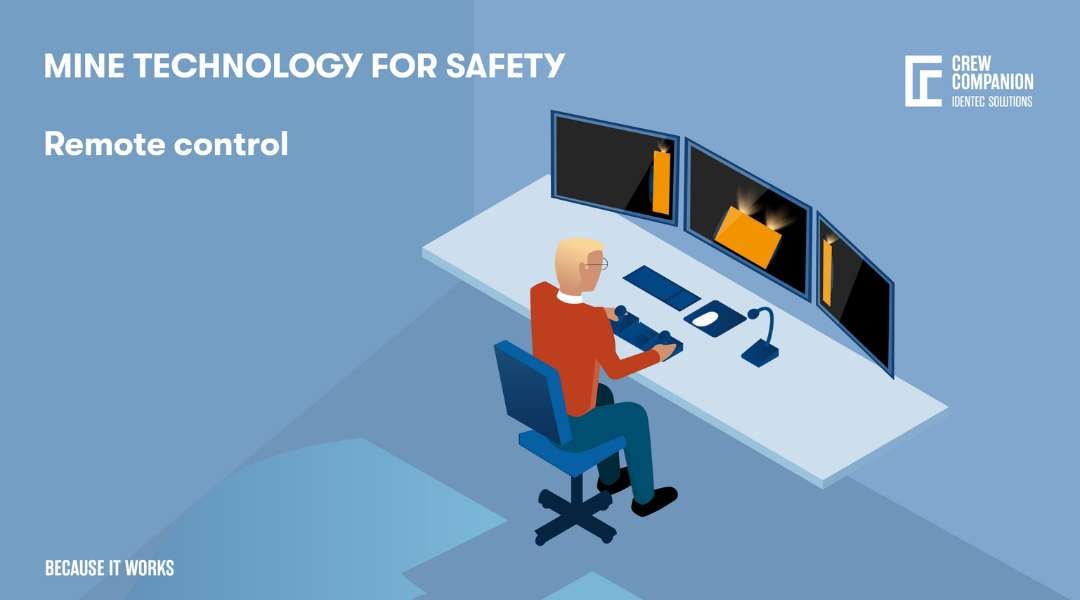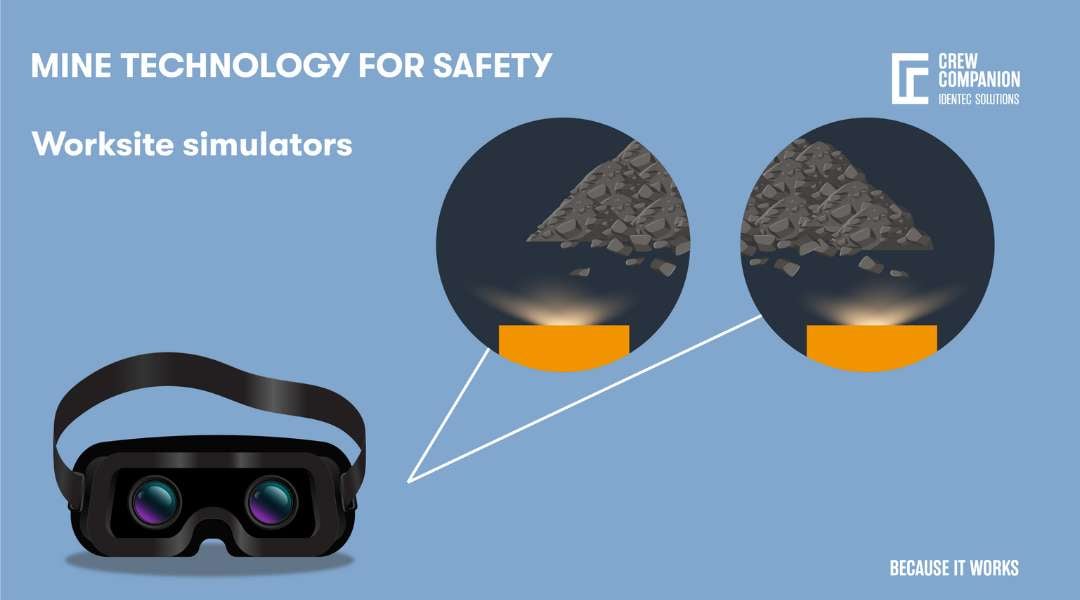Mine Technology: Unlocking the Power for Increasing Miner Safety
| Written by Mark Buzinkay

No video selected
Select a video type in the sidebar.
Table of contents:
- Mine Technology: Categories
- What Mine Technology Improves Mining Safety?
- Advances In Mine Tracking Technologies
- Which Mine Technologies Are Being Developed For The Future?
- Takeaway: Mine Technology And Mining Safety Go Hand-In-Hand
- FAQs
- Takeaway
- Glossary
Mine Technology: Categories
The world of mining is constantly evolving due to advances in technology. In order to ensure the safety and productivity of miners, companies must stay up to date on the latest mining technologies available. This brief outlines how mining technology has been used to improve mining safety and efficiency over the past decades, as well as what new technologies are currently being developed for use in the future.
First, we will discuss existing technologies that have been developed to help increase miner safety. Automated rock bolting systems have been designed to reduce risk by decreasing manual labour for tasks like installing support bolts into unstable or fractured ground. Additionally, various types of sensing equipment can be used underground to monitor air quality, alert miners of hazards in the area and even detect potential cave-ins before they occur.
Second, advances in mine tracking technologies have enabled operators to track the locations of their personnel underground as well as monitor equipment performance. This technology uses unique RFID tags that are placed on equipment or miners and monitored via radio communication systems. This is particularly useful for ensuring compliance with safety regulations and training procedures, which are essential for successful mining operations.
Finally, several new technologies are being developed for future use that could be invaluable for increasing miner safety. For example, autonomous robots can be used to explore dangerous areas underground without putting any miners at risk. Other machines are being designed to handle hazardous materials safely, eliminating the need for humans to be in danger.
Overall, mine technology and mining safety go hand-in-hand. By utilising existing technologies and developing new ones, it is possible to create safer working conditions for miners while increasing efficiency and productivity. With the right tools and training, mines can continue to be a safe environment for workers and operate successfully without putting anyone's life at risk.

What Mine Technology Improves Mining Safety?
Radio communication systems
Radio communication systems are also a valuable tool for improving mining safety. By providing miners with two-way radios, mines can better monitor workers' activity in hazardous areas. Operators can communicate with miners directly, as well as receive instant feedback on any potential hazards or issues that may arise. This type of monitoring also helps ensure that miners stay connected to each other and help one another if there is an unforeseen danger. Additionally, operators can track workers' whereabouts and provide assistance quickly should any problems arise. Radio communication systems are invaluable for keeping miners safe while underground, and they remain an essential part of many mining operations around the world today.
Automated Rock Bolting Systems
Automated rock bolting systems are an essential tool for increasing miner safety. This technology uses machines to virtually eliminate the need for manual labour when installing support bolts into unstable or fractured ground. By using these systems, miners can spend less time in dangerous areas and more time following safety procedures. Additionally, automated rock bolting systems have been proven to be much faster and more accurate than manual methods, reducing the risk of underground accidents. Automation also allows mines to monitor the quality of their work better while saving money on labour costs associated with otherwise tedious work. With the help of automated rock bolting systems, mines can ensure that their workers go home safely at night.
Sensing Equipment Monitoring Air Quality and Detecting Hazards
Sensing equipment is another critical tool for improving miner safety. This technology monitors air quality, alerts miners of potential hazards in their vicinity, and even detects cave-ins before they occur. Sensing equipment is typically installed throughout the mine and monitored remotely. This allows operators to ensure that workers are staying safe by monitoring for signs of dangerous gases or other underground hazardous conditions. Additionally, this technology can be used to track the movements of personnel or machinery, allowing mines to comply with safety regulations more easily. By utilising sensing equipment, mines can make sure their workers have a safer environment to work in.
Dust monitoring is another important element in improving mining safety. Dust monitors measure the amount of dust particles that are present in the air underground and can alert miners if the concentration reaches a hazardous level. This helps to protect miners from breathing dangerous levels of dust, which can cause severe respiratory problems, and gives operators more control over their environment. Dust monitors also come equipped with sensors that detect combustible gases, such as carbon dioxide and methane, helping to identify any potential sources of danger before they occur.

Advances in Mine Tracking Technologies
RFID Tags Placed on Equipment or Miners
RFID tags are a relatively new technology that can be used to improve mining safety. RFID stands for radio-frequency identification, and these tags are placed on equipment or miners in order to monitor their location and performance. The tags are monitored via radio communication systems, allowing operators to keep track of personnel and machinery in the mine. This is especially important as it enables operators to ensure compliance with safety regulations and training procedures. Additionally, RFID tags can be used to detect cave-ins before they occur, alerting miners of potential hazards in their vicinity.
Proximity warning systems are also beneficial for mining safety. These systems use radio waves to detect any nearby equipment or personnel, alerting operators when someone is too close to a running machine, approaching a vehicle or a hazardous area. This helps prevent collisions between two pieces of machinery and protects workers from entering dangerous areas without proper safety gear.
These wearables (RFID tags worn by humans) can also be used to track miners' health, providing real-time monitoring and alerts for any abnormalities in vital signs. Such devices can alert supervisors or medical personnel if a miner has an issue and needs immediate assistance. In addition, wearable sensors can be used to monitor hazardous gases in some mines, such as carbon monoxide and methane. This information will help improve air quality and keep workers from entering dangerous areas. Wearable technology is also being used to detect rockfall hazards in underground mines, allowing miners to avoid them in time. Finally, the use of these devices for miner tracking is critical for safety purposes when an emergency arises. This allows rescuers to identify where they need to go quickly.
One more mining safety share?
Slope Monitoring
Slope monitoring is an important aspect of mine safety. Slopes in underground mines can be dangerous as they are prone to collapse, which can cause serious damage and injury to miners. To prevent such disasters, slope monitoring systems have been developed that use various technologies like ground penetrating radar (GPR), radio communication systems, and seismic monitors. These systems are designed to detect potential hazards before they occur by measuring the angles of slopes, noting any changes or instability in the surface of a slope, and monitoring for signs of strain or significant shifts in the earth's surface. By using these technologies, operators can identify when a slope is at risk for collapse before it happens and take action steps to mitigate the danger. This helps keep workers safe from harm by ensuring that slopes are monitored and kept stable at all times, reducing the risk of cave-ins or other dangerous incidents. With these systems in place, mine safety is improved, and workers can continue working without worry.
How does it work in detail? The laser scanner system is designed for monitoring large open pits, small satellite pits, and volume measurements with a range of up to 4,000m. It can record a 150mm grid of measurements over a highwall every 10 minutes at a 1,000m range, though a 30-minute interval is standard for long-term monitoring. Unlike single-prism methods, it rapidly scans thousands of points for complete surface coverage. The system is Class 1 eye-safe, operates without reflectors, and features waveform processing and a small measurement footprint, enabling monitoring through wire mesh and vegetation—something not achievable with other measurement techniques.” (3)
Remote control technology to operate heavy equipment
Remote control technology has been used to greatly improve mining safety by allowing operators to work with heavy equipment from a safe distance. This technology is being increasingly adopted in underground mines as it allows operators to monitor, operate, and maintain machines while they are located far away from the danger zone. A good example is the Swedish mining giant LKAB. Operators can use this system to manipulate machinery more precisely, enabling them to do tasks such as drilling and blasting with greater accuracy and control. Additionally, this technology eliminates workers' need to be close to potentially hazardous machinery, which minimises the risk of injury or harm.
Another technology being used in mining operations is automated drilling technology. Automated drilling machines are designed to drill holes into the ground safely and efficiently to extract resources. By using this technology, operators can ensure that workers remain safe while still effectively meeting their goals. The machines are equipped with sensors that detect potential hazards such as underground water or gas leaks and alert the operator. Additionally, they come with advanced technologies like GPS tracking, which can help streamline operations and reduce drilling-related mistakes. Automated drilling technology has revolutionised mining operations, making it easier for companies to keep their workers safe while still achieving success in their operations.

Which Mine Technologies Are Being Developed for the Future?
Autonomous Robots Exploring Dangerous Areas Underground
Autonomous robots are another way to improve mining safety. Autonomous robots can explore dangerous areas underground and detect hazardous conditions before they occur. This technology allows mines to go deeper underground than ever before, as the robots can handle hazardous materials safely and reduce the risk of workers coming into contact with them. Additionally, these robots are equipped with sensors that allow operators to monitor air quality, which helps miners stay safe in their environment by detecting any signs of danger. By using autonomous robots in the mine, companies can ensure that their workers are well-protected while still being able to operate efficiently and effectively.
In addition to autonomous robots and machines, drones have also become a useful tool in improving mining safety. Drones can be used for surveying and mapping mine sites, as well as monitoring air quality for dangerous gases. They can also be equipped with sensors to detect hazardous materials or even spot potential problems before they arise. Additionally, operators can observe an area's conditions without having to enter it directly, reducing the risk of harm. This technology is revolutionising the way mines operate by providing an extra layer of safety and security for miners and equipment alike. As technology advances, more uses for drones in underground mines will continue to be developed.
Machines Designed to Handle Hazardous Materials Safely
Machines designed to handle hazardous materials safely are another vital tool for improving miner safety. This technology includes machines specifically designed to safely and securely handle hazardous materials, thus reducing the risk of harm to workers. These types of machines can be used for a variety of tasks, such as loading and unloading hazardous materials, cleaning up spills, and even disposing of dangerous waste. By using these machines, mines can better ensure their workers remain safe in hazardous areas. Additionally, these machines often come with sensors and alarms that alert operators when there is an issue or potential hazard in the area. This allows mines to take immediate action if necessary to protect workers from danger.
Worksite simulators for underground mines
Worksite simulation technology can be invaluable in underground mining operations. By providing miners with a virtual environment that mirrors the physical worksite, they can become familiar with their surroundings and gain much-needed experience before ever entering the mine. This type of simulation training provides miners with access to hazardous environments without actually exposing them to any danger. Additionally, simulations allow miners to practice navigating the work site to identify potential hazards and better prepare for on-site work. Simulation software will also enable miners to test their knowledge and rehearse responses in order to improve safety protocols when working in hazardous areas. Finally, most simulations are equipped with sensors that give users feedback about their performance during an exercise. This helps workers develop the necessary skills to protect themselves in a high-stakes environment.

Takeaway: Mine Technology and Mining Safety Go Hand-in-Hand
The use of modern mining technologies has allowed companies to keep miners safe while still being able to operate efficiently and effectively. Technologies such as RFID tags, autonomous robots, and machines designed to safely handle hazardous materials are just a few ways mining companies can ensure their workers remain safe in their environment. By utilising these technologies, mines can better comply with safety regulations and reduce the risk of accidents or harm to personnel. Mine technology and mining safety go hand-in-hand, and by implementing these technologies, mines can make sure their workers have a safer workplace.
Delve deeper, browse through our wide selection of articles and learn much more about miner safety!
Glossary
Rock bolt - is a steel rod used in tunnelling and underground mining to reinforce rock formations by providing support to the roof or walls of an excavation. Installed in drilled holes, rock bolts are a cost-effective, simple, and quick reinforcement method that can be fully mechanised. Their length and spacing vary based on support needs.
Rock bolts are anchored using three main methods: mechanical, grouted, and friction. The most common mechanical anchor uses an expansion shell, which expands against the borehole wall as the bolt rotates, creating friction and interlock. A preload can be applied by tensioning the bolt with a hanger or face plate to distribute the load evenly onto the surrounding rock. (4)
Sources:
(1) N. S. Reddy, M. S. Saketh and S. Dhar, "Review of sensor technology for mine safety monitoring systems: A holistic approach," 2016 IEEE First International Conference on Control, Measurement and Instrumentation (CMI), Kolkata, India, 2016, pp. 429-434, doi: 10.1109/CMI.2016.7413784.
(2) Yang Li, Birhane Getnet Engeda, Zhu Junqi, Geng Jichao: Mining Employees Safety and the Application of Information Technology in Coal Mining: Review; In: Frontiers in Public Health, vol 9, 2021, DOI=10.3389/fpubh.2021.709987
(3) https://lidarmag.com/2015/12/11/slope-monitoring-solution-for-open-pit-mines/
(4) https://www.britannica.com/technology/rock-bolt
Note: This article was updated on the 4th of August 2025. This article was partly created with the assistance of artificial intelligence to support drafting. The head image was generated by AI.

Author
Michal Wozniakowski-Zehenter, Marketing Manager
Michal Wozniakowski-Zehenter is an experienced marketing and project management professional. He spent most of his career on projects with a strong focus on digital marketing and event management. He is a very active voice representing offshore and mining industries through social media channels. Michal writes mainly about offshore oil and gas, renewable energy, mining and tunnelling. Compiling and sharing the knowledge within industries is one of his goals.
Related Articles
Related Product





